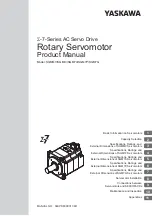
MCP-Z PROCESS
,
14-020, REV. C
36 of 58
Serial interface
RS232 IN (female)
A 9-Pin D-socket is available on
the rear panel of the pump.
Setting the pump address
Each command string begins
with the pump address (1 – 8).
It is factory-set at 1 and can be
changed with @ (also refer to the basic
settings described on Page 16).
The address will be stored permanently
(even after the pump has been switched
OFF). The assignment of the address
enables the user to control up to 8
ISMATEC
®
drives via one interface.
Structure of the commands
The address is followed by a
character. Some commands have
an additional parameter which
always consists of 4 or 5 figures.
The command string
is completed
by
a carriage return (ASCII 13). The
pump confirms most of the commands
with an asterix*. Yes/No inquiries
are answered by + (yes) or – (no).
Multidigit replies are concluded by
(cr) ASCII 13 and (lf) ASCII 10.
Incorrect
command strings
are answered by #.
Numerical values
are confirmed as 3 to
5-digit figures. Four of the five digits are
numerals, one digit is either a decimal
point or a preceding blank space.
Interface sérielle
RS232 IN (entrée femelle)
Le raccordement se fait par le biais
d’une douille D à 9 pôles (femelle).
Adressage
Chaque commande commence avec
l’adresse de pompe 1 – 8. Elle est réglée
par défaut sur 1 et peut être modifiée
avec @ (voir réglage de base, Page 16).
L’adresse est enregistrée de
manière permanente (c’est-à-dire
également après la mise hors service
du moteur). L’adressage permet la
commande de plusieurs moteurs
ISMATEC
®
par le biais d’une seule
et même interface RS232.
Structure des commandes
Un signe suit l’adresse en tant que
commande. Certaines commandes ont
en outre un paramètre com-portant
toujours 4, respectivement 5 chiffres.
La commande
se termine par
un retour
à la ligne (ASCII 13). La pompe quittance
la plupart des commandes avec une
étoile*. Elle répond aux questions
oui/non avec + (oui) ou - (non).
La pompe termine les réponses
multipositions avec (cr) ASCII
13 et (If) ASCII 10.
Les séquences de signes
erro-nées
sont quittancées avec un #.
La pompe renvoie
les valeurs
chiffrées
sous forme de nombre de
trois à cinq positions. Quatre de ces
cinq positions sont des chiffres, une
position étant soit un point décimal,
soit un blanc en première position.
Serielle Schnittstelle
RS232 IN (Eingang, weiblich)
Der Anschluss erfolgt über
eine 9-polige D-Buchse.
Adressierung
Jeder Befehl beginnt mit der
Pumpenadresse (1 – 8). Sie ist
werkseitig auf 1 eingestellt und kann
mit @ verändert werden (siehe auch
Grundeinstellungen Seite 16).
Die Adresse wird permanent
gespeichert (d.h. auch nach
Ausschalten des Antriebs).
Die Adressierung ermöglicht die
Ansteuerung von bis zu 8 ISMATEC
®
-
Pumpen mit einer RS232-Schnittstelle.
Aufbau der Befehle
Nach der Adresse folgt ein Zeichen
als Befehl. Manche Befehle haben
zusätzlich einen Parameter, der
aus 4 bzw. 5 Ziffern besteht.
Der Befehl wird mit einem carriage
return (ASCII 13)
abgeschlossen
. Die
meisten Befehle quittiert die Pumpe
mit einem Stern*. Ja/Nein-Abfragen
beantwortet sie mit + (ja) oder – (nein).
Mehrstellige Antworten beschließt die
Pumpe mit (cr) ASCII 13 und (lf) ASCII 10.
Fehlerhafte
Zeichensequenzen
quittiert sie mit einem #.
Zahlenwerte
gibt die Pumpe als
drei- bis fünfstellige Zahl zurück. Vier
dieser fünf Stellen sind Ziffern, eine
Stelle ist entweder ein Dezimalpunkt
oder eine führende Leerstelle.
Kommunikationsparameter
Communication parameters
Paramètres de communication
Standardeinstellung
Default setting
Réglage standard
9600 baud, 8 bit,
1 stopbit, no parity
Alternative
1200 baud, 8 bit,
1 stopbit, no parity
RxD
Empfangsdaten
Received Data
Données reçues
GND
Grunderde
Signal Ground
Prise de terre du système
TxD
Sendedaten
Transmitted Data
Données envoyées
Hinweis
Der Antrieb MCP-Z
Process
hat beim
Einschalten eine Verzögerung von 3 Sekunden,
bis die serielle Schnittstelle zuverlässig anspricht.
Please note
When switching the MCP-Z
Process
drive ON, the serial interface will
respond after a 3 second delay.
Remarque
Le moteur MCP-Z
Process
a un retard
de 3 secondes lors de la mise en service
jusqu’à ce que l’interface sérielle fonctionne
de manière fiable.
















































